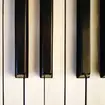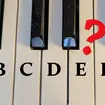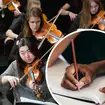Important question: is ‘Bohemian Rhapsody’ an actual rhapsody?
24 July 2019, 12:35 | Updated: 24 July 2019, 12:36
Queen’s progressive rock classic is an absolute masterpiece of 20th-century music, but is it a Rhapsody in a true, music theory sense?
What is a rhapsody?
We begin with the the Greek word, rhapsōidos, for a reciter of epic poetry. In the 18th century, literary rhapsodies first became linked with a musical form – with a Czech composer Václav Tomášek one of the first to use the title.
A rhapsody as a musical form is a single-movement work that is episodic (i.e. has distinct groups of musical ideas), free-flowing in structure, and features a range of highly contrasting moods. Expect something that has an air of improvisation and virtuosity – something that's going to take you on a journey, just like a dramatically recited epic poem.
Examples include Liszt's Hungarian Rhapsodies, Gershwin's Rhapsody in Blue – both are large, free-flowing pieces of music, which include dramatic musical episodes as well as different themes and moods.
Here's some hugely enjoyable Liszt as an example...

Valentina Lisitsa plays Liszt's Hungarian Rhapsody No. 2
The structure of Queen’s Bohemian Rhapsody
The song itself is a great example of progressive, symphonic rock, and it draws heavily on a whole range of musical techniques: from syllabic choral music to dramatic opera.
The song begins with an introduction, a four-part homophonic chorale, “Is this the real life?” The introduction develops with piano accompaniment and and a solo voice emerging in the texture.
The next episode features a piano ballad with solo voice over an arpeggiated accompaniment. The expansive, expressive mood here is very fitting of a rhapsody.
The material of the ballad then moves into a extended guitar solo with the feeling of a free-flowing improvisation something you’ll hear in many 19th-century pieces of music.
The famous pseudo-operatic midsection follows, with all those ‘Galileos’. This section is rich in chromaticism, with rapid rhythmic and harmonic changes. Special shout-out to Roger Taylor's high falsetto B flat on ‘for me’, which forms the structural climax of the rhapsody.
That high B flat leads into the head-banging hard rock episode (which famously featured in Wayne's World) with blazing virtuosic guitars and drums.
An Outro Ballad concludes the song, releasing the tension of the operatic and hard rock episodes and reprising the material of the opening piano ballad.
There you have it: episodic, freely flowing, high in contrasts, and with the narrative of an epic journey.
In conclusion: 100% Rhapsody.
But don’t take our word for it…
The harmonic and melodic complexity of the Queen hit has attracted the attention of many musicologists, who have unleashed their full music geekery and delved deep into the musical science of its inner-workings.
The Guardian's music critic Tom Service links the song directly to the 19th-century classical traditions of quasi-improvisational reveries, found in the piano works of Schumann and Chopin, and the orchestral tone-poems of Strauss and Liszt.
In a fantastic, no-stone-left-unturned analysis of the song, muso and writer Andy Kneis lays out how ‘Bohemian Rhapsody’ follows the archetypal story structure of the Hero's journey, step by step – the structure that Richard Strauss uses in his work Ein Heldenleben (A Hero’s Life).
The monomyth, or the hero's journey, is the common template of a broad category of tales that involve a hero who goes on an adventure, and in a decisive crisis wins a victory, and then comes home changed or transformed. pic.twitter.com/UV4gYjNx8s
— Gautam Ghosh (@GautamGhosh) November 29, 2018
The song
Take six minutes to enjoy every moment of this magnificent rhapsodic journey. What a masterpiece.

Queen - Bohemian Rhapsody (Official Video)


























